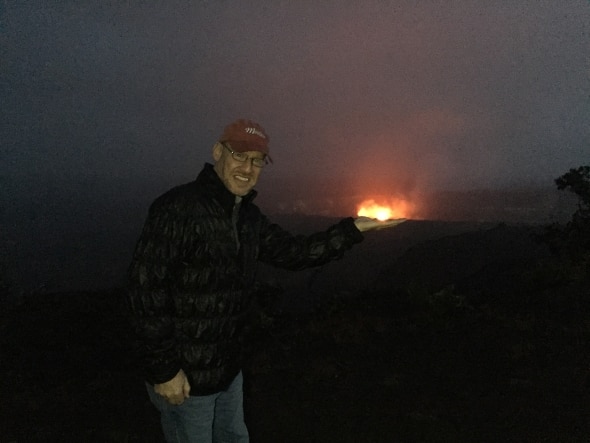Create a free profile to get unlimited access to exclusive videos, sweepstakes, and more!
The stars watch the land reborn

I've always loved geology, second in science really only to astronomy for me. There’s a connection, of course, with planetary science, the origin of the elements, and the formation of the solar system. There's a literal connection when it comes to impact craters, too, and together with every kid's love of dinosaurs, there's definitely a scientific sweet spot of interest.
And oh, volcanoes. They have always held a dread and fascination for me. I have written about them many times and posted images from satellites hundreds of kilometers above and even my own photos taken from a caldera's edge. I've been to a few now, stood on their precipices myself, and there is never a moment where, in my mind, I can't see the destruction and power and energy stored just beneath the surface.
But there's also the potential for creation. Being on the Big Island of Hawaii, you get a sense that everything you are standing on and everything you can see was, not too long ago in a geologic sense, molten and flowing magma in the Earth's mantle.
This creation is ongoing. The Kilauea volcano on the Big Island is still active, and lava pours out of it from several locations. A few years ago, photographer Jack Fusco along with his friend Mark Jacobs decided to make the journey to the island to capture footage of the flows, and the time-lapse video they created is just spectacular.
I've been to the Big Island three times; the first two times the lava pool at the center of the crater at Halema'uma'u was too low to see, but the third time it had risen so high the molten rock was not only easy to see, but was jetting fountains onto the crater wall.
My wife and I talked about heading to the coast to see the lava plumes going into the sea, but the weather was too rough (a friend took a helicopter ride, but they couldn't get close enough and all they saw were steam clouds), and we didn't like the idea of a long hike over rough and sharp a'a to get to the location. Reading about Fusco and Jacobs' arduous trek out to the 61g flow, I think perhaps we made the right decision.
… but I have to wonder. In Colorado I've stood on rocks well over a billion years old, and some just tens of millions. In Hawaii, though, I've been on lava fields that formed since the time I was born, and some that were cracked and still had steam venting out of them.
What would it be like to stand witness to lava flowing out into the ocean, knowing that just under the water's surface new land was forming as we watched?
Perhaps sometime again I'll get the chance to find out. It's a big planet, and there's a lot to see. And to my endless delight, in this case, there will always be more of it to see as well.



























